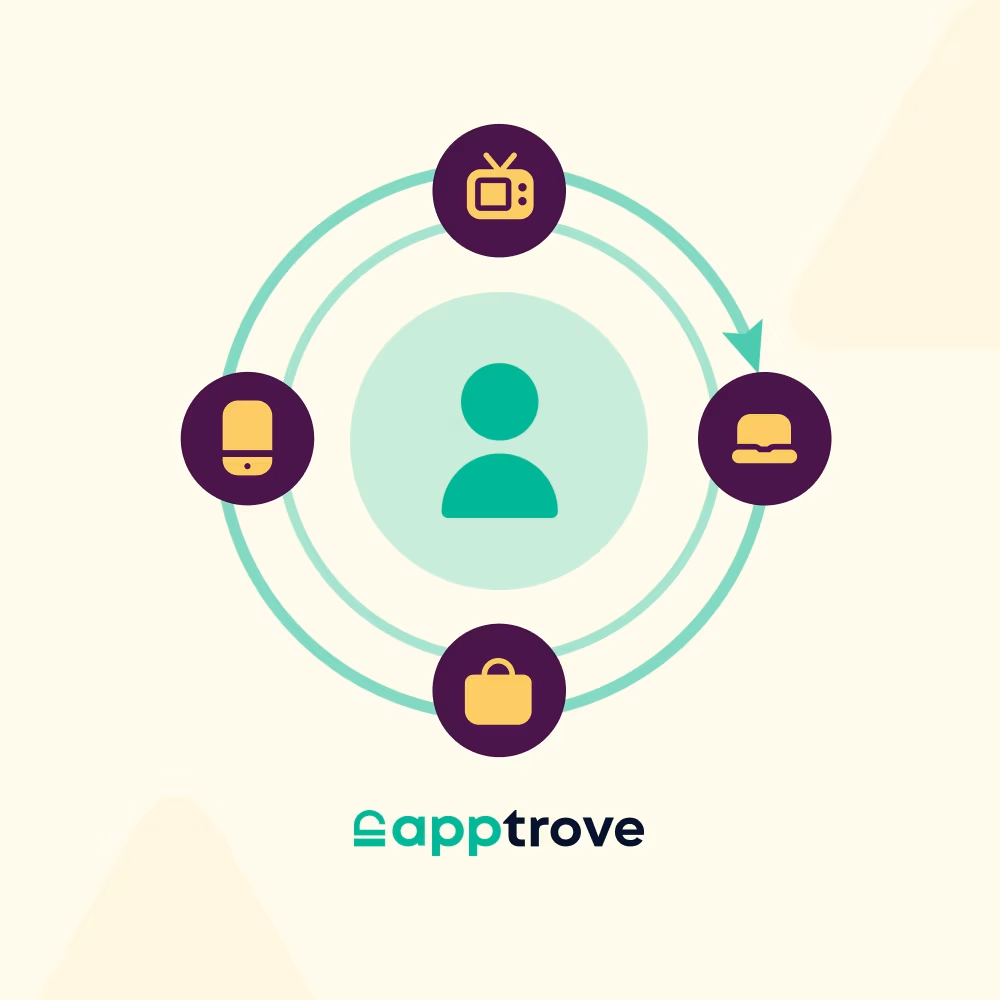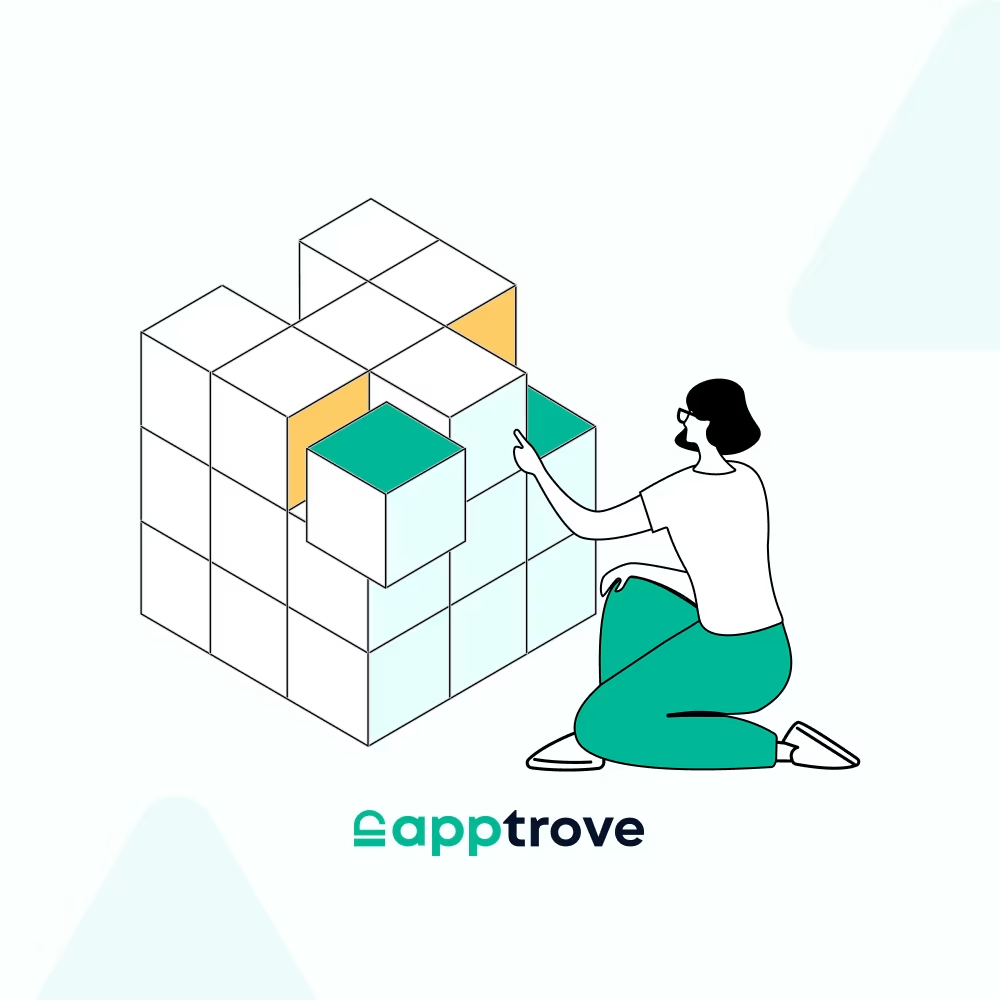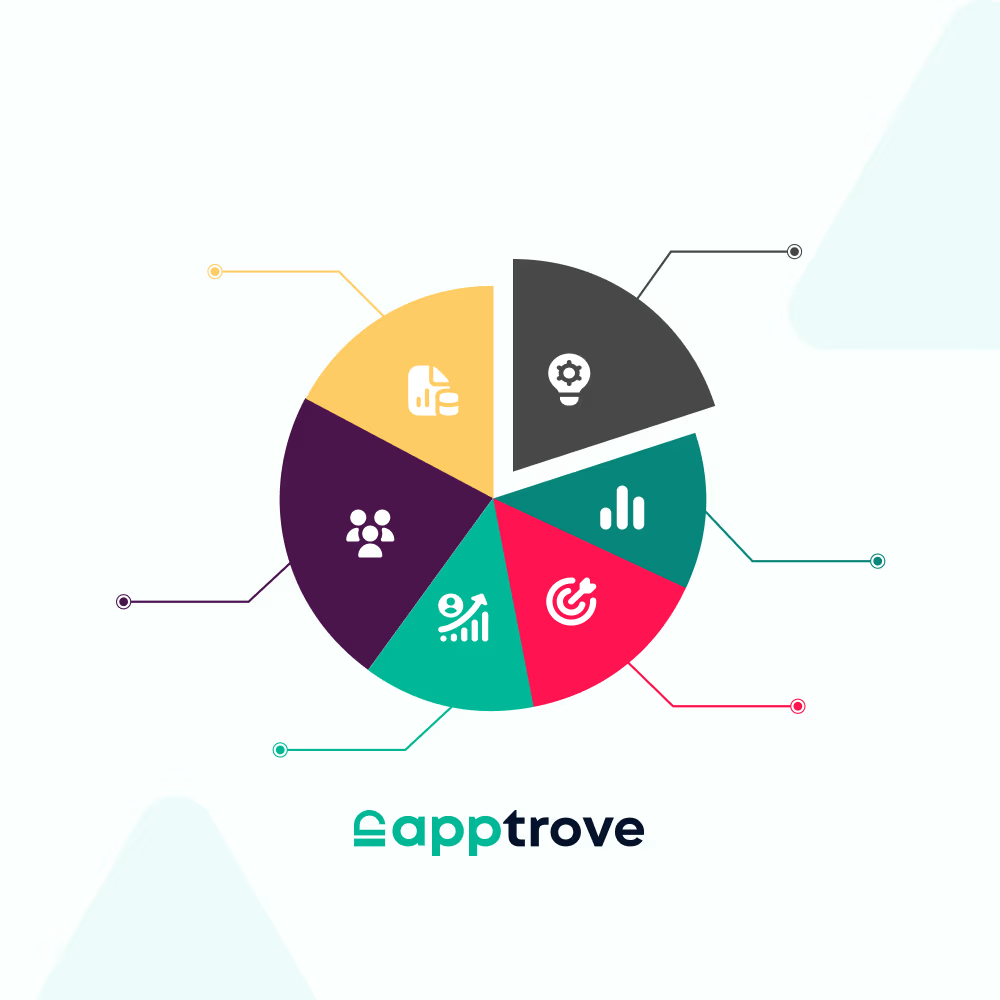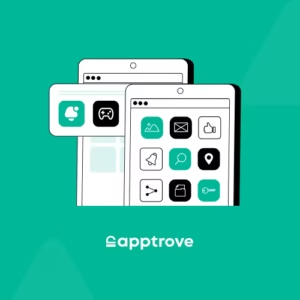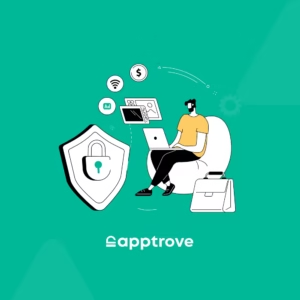Why Web-to-App is More Important than Ever

The fading line between web and mobile app experiences is a thing of the past. Customers want the ability to move from a mobile website experience to an app experience seamlessly, with no friction or retraining of mindsets. This is not only about data transfer or convenience; it is about building long-term value. Data indicates that app users have 3× higher conversion rates than mobile web users; therefore, web-to-app journeys will become a critical survival strategy and not only a growth strategy.
Consider your own behavior on websites. How many times have you just looked at a product on a brand’s website and later revisited the app and completed the purchase? This is the magic of the web-to-app moment. For a business, it does not just signify one transaction/duration; it sets up the opportunity for repeat engagements, loyalty, and higher lifetime value (LTV).
The urgency is real. With increased acquisition costs and privacy frameworks limiting traditional tracking, brands can’t rely solely on paid ads and web-based funnels. The app becomes the retention hub—data is richer, experiences are seamless, and personalized engagement is plentiful. Web-to-App doesn’t just become a “nice to have,” but a measurable growth engine, providing deeper attribution insights, lowering churn, and driving residual customers out of visitors.
Moving forward, it’s the brands that succeed in this handoff that will win—not just on installs, but on relationships.
What is Web-to-App? (And Why You Should Read This)
At its best, web-to-app is simply the method of directing a user from your mobile web into your mobile app at just the right time. It’s a growth strategy that uses the strengths from both the mobile web and the app experience, since the web is focused on reach, while the app experience is focused on retention.
When a user discovers your brand via a search engine, social post, or advertisement, they are usually directed to your website – this is all great. However, here is the truth – while mobile web is great for discovery, it is not designed for long-term engagement. App engagement is where actual loyalty occurs! Research shows around 3× more lifetime value or 3.5× higher spend per user compared to mobile web users, thanks to tailored experiences like personalization, push notifications, saved preferences, and smoother checkout..
This is where Web-to-App comes into play! By nudging users from browsing on the mobile web to downloading or opening your app, you get to enjoy the benefits of:
Enhanced engagement: Apps provide native experiences, faster loading times, and customized journeys.
Improved retention: With push notifications, the use of direct communication channels reduces churn.
Better attribution: Apps provide cleaner, privacy-safe data to understand user journeys.
Increased LTV: Repeat conversions can be driven by convenience and personalized interactions.
The Transformation from Web-to-App
When mobile phones first appeared, apps were a product on their own. Brands tried to drive installs through ads, but often left the bridge unused between web and app. High installs but low retention rates resulted from the fact that many instances of installs were not backed by intent.
Over time, marketers recognized the role the web plays in the customer journey. A user could search for a product, consider pricing or reviews on the web, then decide to further engage in the app. This realization prompted the industry to shift away from ‘app-only’ as a growth strategy to Web-to-App strategies that would connect both experiences.
Fast forward to today, Web to App is not only a marketing hack, it’s a necessity. Changes in privacy legislation, like ATT and cookie deprecation, mean relying on paid channels for user acquisition is simply not sustainable. The mobile web becomes the gateway, and the app becomes the destination for retention and monetization, and engagement.
In a nutshell, Web-to-App is how you convert casual one-time visitors into loyal lifelong customers. Without it, you risk losing users in the messy middle of the funnel, and with it, you have a clearer and measurable path forward into sustainable and accelerated growth.
The Elements of Web-to-App Conversion
Behind any seamless web-to-app experience are some unseen forces working behind the scenes to make the transition as natural and seamless as possible. The best way to think about it is building a bridge—you not only need to build the road, you need to put putting beams that will support it and the foundation that will hold the whole thing. In the case of web-to-app conversion, Smart Banners, Smart Links, and SDKs are the beams: the three pillars that make conversion possible.

Smart Banners are the first touchpoint for many users. They appear at the top or bottom of the mobile webpage; these polished app-branded strips can include “Open in App” or “Download the App.” Although they may appear simple, Smart Banners are essential. They’re designed to capture intent at the time a user is already active and exploring, so we can nudge them slightly deeper into the experience without disruption. Smart Banners are contextual and relative pop-ups. Smart Banners can be personalized depending on where the user came from, or where they are exploring in the app. An eCommerce brand can show a banner that doesn’t just say “Open the app,” it could say “Shop this collection faster in our app.” That little layer of context can be the difference between curiosity to conversion.
The second pillar, Smart Links, gets even more sophisticated than that. Smart Links are the connective tissue that makes sure a user who clicks from an ad, social post, or email isn’t dropped on a rotten homepage, but rather delivers them where they need to be inside the app. Let’s say you’re scrolling through Instagram, and you see a promo for a new sneaker drop. If you click the link and it either opens the app store or simply dumps you on the app’s home screen, at that point, you’ve created unnecessary friction and the chances you’re going to drop off are very high. Smart Links eliminate friction because they were designed with intelligence: they know if the user has the app installed, if it does, it opens directly in the app, if not, it will take them to the correct download path, and then remember where it intended to take that user. This is what makes it feel like a seamless journey, and not a disjointed one.
Finally, there are SDKs (Software Development Kits) which, while not necessarily visible to the end-user, are the basis of how web-to-app tracking and measurement actually function. SDKs actually exist in the codebase of the app and track everything from unique user ID recognition to passing campaign parameters and install sources, and then passing the deep link destination after installation. Without SDKs, attribution would be a guess and brands would lose visibility into whether their web-to-app strategies were driving growth at all. For example, when a user clicks a Smart Link, installs the app, and then makes a purchase, it is the SDK that ties everything together and attributes the revenue back to the initial click. In summation, SDKs form the data backbone of web-to-app conversion and enable brands to both optimize and deliver personalized experiences.
When the three pillars come together, users have a frictionless experience, and marketers have a wealth of insights. Smart Banners capture intent in the moment, Smart Links transfer context across platforms, and SDKs align the entire journey in a measurable way. This combination does more than drive down drop-offs: it builds trust and consistency in a user’s journey, which increases the likelihood they convert from a casual visitor to an engaged app user. In a mobile-first world, the trifecta of Smart Banners, Smart Links, and SDKs is no longer optional; it is the basis of effective web-to-app conversion. To see how Apptrove enables this in practice, check out our step-by-step Web-to-App Smart Script article.
The Behind-the-Scenes of Every Web to App Journey
At the surface level, every web-to-app journey appears simple — a user clicks it and just like that, they are in the app, but behind the scenes is a well-defined flow working to make the transition feel seamless. By understanding the flow, you can appreciate how web-to-app conversion works, and you can focus on optimizing each step to improve efficiency and decrease the cost of sales attribution.

The journey usually begins with a web touchpoint, where a potential customer is engaging a smart banner, an email link, or a paid ad. When that potential customer engages with the touchpoint, a whole bunch of contextual data is passed along. Sample data includes, but is not limited to, the campaign ID, user device, and product or offer being promoted. All this context information becomes critical when routing the customer to the app. Once the touchpoint is engaged, two primary pathways develop, depending on whether the user has the app installed.
In scenario one, where the app exists on the device, the user experience is nearly instantaneous. The smart link recognizes the app is installed, and deep links the user into the correct in-app location, which could be a checkout flow, a personalized offer, or a content feed, etc. This process reduces friction and capitalizes on intent, meeting the user exactly where they’re most likely to take action.
Scenario two is a bit more complicated, but equally critical: the user does not have the app installed yet. In this case, the smart link will send the user to the correct app store (iOS App Store or Google Play), with all the metadata from the original web interaction. When the user installs and opens the app, the SDK will collect that context and the experience can continue – for example, taking them to the page that they were originally viewing before the download. This continuity of experience is what makes web-to-app so powerful – it allows the users to avoid a broken funnel and creates a seamless, consistent journey.
Both situations share a key concept — the ability to maintain intent across platforms and devices. When done properly, this not only helps enhance user experience, but optimally tags the most accurate due attribution to marketing decisions, helping marketers see exactly which campaigns and channels drove real installs, purchases, and engagement.
Campaign Attribution from Web-to-App
When you do performance campaigns across search, social, and display, you’re not just driving clicks; you’re driving journeys. Each of these journeys typically starts on the web before continuing to your app. But here’s the problem: if you cannot correctly attribute conversions from web-to-app, your campaigns appear weaker than they are. This is where web-to-app attribution comes in to help fill in the measurement holes and give you the complete picture.
Attribution, in this case, simply means answering one question: Which campaign touchpoint took a user from the web into your app, and then, ultimately, to an install or a purchase? As it turns out, marketers use different combinations of identifiers, some parameters, and SDK integrations to do this. Let’s take a look at how this actually works.

UTMs: The Old Reliable of Web Attribution
UTM parameters – utm_source, utm_medium, and utm_campaign – have been the state-of-the-art solution for web attribution for over 10 years. When engaging in a web-to-app flow, UTMs are still important. Consider, for example:
A search ad might carry UTMs like utm_source=google&utm_campaign=back_to_school. When the user clicks, those UTMs flow through the redirect into your MMP or analytics platform. If the user installs or purchases within the app, the attribution platforms can tie it back to the UTM string to provide campaign-level insights for your marketing.
However, UTMs have their limitations – they’re string-based and often don’t survive redirects, app store hops, or the constraints of privacy-related practices. This is why new identifiers, like GCLID and FBCLID, are important to web-to-app attribution.
GCLID: Google’s Click Identifier
For Google Ads, the Google Click Identifier (GCLID) is automatically appended to ad clicks (if auto tagging is enabled). Here’s how it moves through the funnel:
- User clicks on your search ad → a unique GCLID for that click is created.
- The GCLID will be stored and passed through your web-to-app redirect links flow.
- Once the user installs or takes an in-app action, the GCLID allows platforms to connect that conversion back to the exact Google Ads campaign, keyword, and creative.
Not having GCLID tracking means your Google Ads campaigns could be under-attributed, particularly when there are web-to-app redirections involved.
FBCLID: Facebook’s Equivalent
Meta follows a similar approach with FBCLID (Facebook Click Identifier). Any click from Facebook or Instagram ads automatically appends this parameter. The logic works the same way:
- FBCLID persists through the web-to-app redirect.
- When tied to your SDK and attribution platform, it ensures every install, subscription, or purchase triggered by Meta ads gets credited properly.
This level of granularity matters. Without FBCLID, Meta traffic could look like generic “referral” traffic, leaving you blind to campaign efficiency.
The Importance of Attribution for Web-to-App
The combination of UTMs, GCLID, and FBCLID allows you to attribute across ecosystems (Google to Meta to programmatic). If you put these identifiers together with your MMP SDK, you can answer questions like:
- Which campaign led to the installation?
- Did that user land on a landing page before going to the store?
- Which keyword or creative provided the best ROI?
Attribution has the power to change your web-to-app journey from blind to a measurable growth engine.
Advanced Use Cases for Web-to-App
Web-to-app strategies shine brightest when considering the different behaviors and expectations of different industries. While it all comes down to smart banners, smart links and attribution SDKs, how an individual interacts with these flows is varied, which leads to unique and targeted campaigns that deliver both engagement and revenue.

In e-commerce, Web-to-App can help to bridge the gap between the discovery and purchasing of a product. A user may explore a seasonal collection on a mobile site, comparison shop, read reviews, and then a smart banner encourages them to continue in the app, where they can make personalized and relevant recommendations, complete a faster checkout, and save their payment information. This enhances the chance of conversion and ultimately strengthens sales for the brand while allowing improved tracking of user behavior for future campaign iterations.
Travel apps work in a similar way. Think of a user looking for flights or hotels on a mobile web page, and they can simply click on a smart link and be taken directly into the app with their location, dates, or discount code included in the campaign data. By deep linking customers into content that is relevant to them, travel brands eliminate friction, enhance the booking experience, and increase customer retention for the next trip.
With a Web-to-App approach in the gaming realm, we blend low-pressure casual discovery with high-pressure enjoyment. For example, a gamer might just have watched a trailer or a leaderboard on a mobile site. Smart banners can prompt them to install the app, but smart links can take them directly to a tutorial, challenge or in-game reward that connects directly with their previous browsing activity. This enhances the conversion rate and early engagement, two important factors in player retention and monetization.
Lastly, finance and fintech apps utilize Web-to-App flows to accelerate user signups, loan applications, or portfolio or account tracking. Users will often navigate the web first to look into interest rates, credit products, or investment options. With smart links, you can ensure that once they download the app, all the information they entered before, or the parameters for the campaign, carry over. This reduces friction and increases completions.
No matter the vertical, the main idea remains: Web-to-App takes the journey from web-to-app, makes it seamless, quantitative, and relevant. If you can customize smart banners, smart links, and deep linking practices to match your users’ behaviors in your specific industry, brands will be able to drive more conversions and engagements, and ultimately lifetime value.
Crafting High-Converting Web-to-App Banners
The Web-to-App journey doesn’t start with the app; it often starts with the banner your visitors see on your mobile website. Let’s be clear: a good banner is more than just an aesthetic piece; it is a conversion tool that can ignite or extinguish your web-to-app strategy. Placement, messaging and personalization are critical to ensure your users click, install and then make sure they stay engaged with your app.
Placement is important. Smart banners work best when they are noticeable, but don’t interfere with the browsing experience. Banners at the top of the page grab attention immediately – especially users coming through a campaign link – while banners loaded at the bottom of the page aren’t as disruptive and allow users to look around before soliciting an action. Timing is equally important – your banner should load after the user has been on the page for a few moments or has interacted with a piece of content. Users show intent before the banner interrupts them, and all of these elements are necessary when implementing a banner.
When it comes to persuasion, copy and messaging are extremely effective. Users are checked out by relevance and clarity, so eliminate generic calls-to-action, such as “Download App.” Instead, use phrases that provide context: “Continue Shopping in Our App for Faster Checkout” or “Track Your Flights Instantly in the App.” Allow the user to associate an action with a real benefit, and your chances of a click will also increase, along with the chance for an install.
Furthermore, personalization really takes conversion to the next level. Current web-to-app flows allow the banner to adapt based on the referral source, campaign parameters, or user behavior. For example, an e-commerce user who is viewing a summer collection via a paid social ad may see a banner that says, “Shop Summer Picks Instantly in the App”, while a user who is checking their projects from email might see an added banner to “View My Saved Wishlist” instead. Personalized messaging improves click-through conversion rates while also building the users’ perception and trust in your brand.
A/B testing is essential when optimizing performance. Always change the color of your banner. Vary the length of your copy. The text that appears on your button, its placement and even the colour are all areas to test. Each of these will either improve or significantly reduce your conversion rate. Optimizing your banner content is a never-ending process that assures your banners are always relevant, stimulating and conform to user behaviour expectations for all campaigns and segments.
Lastly, the technical integration, Banners are capable of using smart link parameters that maintain attribution and deep linking. It is necessary that they do. This means that the moment a user downloads the app, their journey and experience is tracked in its entirety – from the initial click through to in-app session activity – this ensures that you continue to capture web-to-app analytics.
In conclusion, a well-optimized web-to-app banner that heavily weighs the weight converts, ‘weighs up’ design, timing, copy, personalized status and technical attribution. When it is done well, there is an impressive conversion of passive web traffic to engaged app users, ultimately increasing installs and maximising future user lifetime value.
Evaluating Web-to-App
Implementing a web-to-app strategy is only the first half of the process; figuring out how effective it is is just as important. If you do not have the right metrics, you are in danger of blindly optimizing and missing opportunities to enhance conversions, engagement, and lifetime value. Measuring success in web-to-app campaigns involves user-level analytics, campaign attribution, and performance metrics that yield a complete story.
The first metric you should look at is conversion rates, which is the proportion of web visitors that become app users. This metric is a fast measure of how effective your smart banners, smart links, and deep linking are at driving downloads. For example, if a given campaign is seeing 5% click-to-install, this is the opportunity for you to test new messaging or placement.
Next, track true engagement metrics in the app. Metrics such as how long users spend in a session, how many screens they go through, or even if they completed certain actions in-app, tell you if users are just downloading the app or actually using it. This relates directly to lifetime value (LTV) – showing you if your web-to-app flows are bringing in high-quality users.
The last piece of the overall tracking is attribution accuracy. With UTM parameters, GCLID and FBCLID, and combined with your SDK, you can see what campaign, sources, or even creatives drove the install. This allows you to answer ROI and understand which channels you want to allocate your budget to the best-performing channels. Attribution that is based on people can help these efforts by bringing the web and app together and understanding the user journey, not just isolated clicks.
Retention rate (how many users went on to continue using the app after one day, seven days, or thirty days), and revenue per user (for subscription-based and e-commerce apps), are other key performance indicators worth reviewing. Tracking these metrics over time will indicate whether your web-to-app strategies are attracting users who will remain in the app and become profitable.
And don’t forget about A/B testing and cohort analysis! Testing to compare different banner ads, links, or landing flows and measuring how each performs across different cohorts is an excellent way to optimize your app user experience in a strategic way. Cohorts can also help spot trends (ex., learning which traffic sources are delivering the highest LTV users, or which messaging is encouraging long-term usage of the app).
Bringing these metrics together can provide marketers who are really trying to validate their web-to-app strategy with the data to make confident decisions about engagement. Ultimately, every click, install, or app interaction is a chance for insight! In a world where competition is fierce and time is precious, having data-driven conversations about every aspect of your user experience is not just a nice-to-have; it’s a critical component to ensuring growth and articulating real ROI!
The Implications for Web-to-App Conversions
The web-to-app landscape is changing more rapidly than ever before with new technology and evolving user expectations. As privacy laws ramp up and third-party cookies go away, marketers are left with a growing need to rely on first-party data and privacy-compliant attribution models to capture journeys from web-to-app. As this shift continues to occur, marketers will put more reliance on SDKs and server-to-server integrations to maintain the ability to capture and link user actions.
As the relationship between web and app continues to evolve broadly and rapidly, AI will be one technology that drives change. AI-enabled personalization will allow for the ability to dynamically change a smart banner and smart link based on actual real-time user behavior, device, geographic location and campaign context. For example, if a user visits a mobile site, they could be served a smart banner immediately, which could be an AI-generated ad for the exact product or feature grey most likely to interact with in real time. This dynamic accuracy will deliver higher conversions in real time over static messages.
Hyper-personalization will also flip user expectations. No longer will users receive the same poor, cookie-cutter experience across all devices; instead, they will receive an app experience that appears to be custom-built for them. Users will be offered the ability to continue their web session either with elements, such as preferences, carted items, or viewed content, carried over to the app. When combined with predictive analytics, hyper-personalization can allow for predictive engagement that either allows the user to, or even excites the user to continue down the journey by anticipating and/or suggesting next steps. The more casual the user is on the web, the more susceptible they’ll be to converting to a loyal, high-value app user.
Last, cross-platform measurement and people-based attribution will seem commonplace. Understanding every point in a user’s lifecycle (website, app, etc) will be vital to prove that a user is worth the journey to ROI, as well as to better iterate strategies for growth.
The future of web-to-app conversion will ultimately be smarter, hyper-personalized, and privacy-conscious, where each click has a valid purpose and every user journey is optimized for maximum engagement and value. Brands that embrace these trends today will be the ones driving tomorrow’s mobile-first growth.
How Apptrove Aids You in Web-to-App
The complications associated with web-to-app conversion can be daunting, but Apptrove ensures the tools you need to make it seamless are at your disposal. With Apptrove, you can engage users at the most important moments and track the accuracy of their path thereafter. Apptrove’s smart banners, smart links, and SDKs ensure that any experience from your website can easily translate into an app experience with attribution across campaigns maintained.
From a marketing perspective, this means that you can employ dynamic banners within your website that change to match user behaviour and campaign settings – encouraging installs or in-app engagement without disrupting the user’s browsing session! We also provide advanced deep linking, so whether your users are returning or installing for the first time, they are sent directly to the relevant location in your app alongside the banner.
Apptrove’s analytics and attribution framework will allow you to track these web-to-app interactions in real-time. You’ll also know which campaigns, sources, and creatives drive the best conversion and engagement.
Moreover, Apptrove’s platform offers people-based attribution, which combines web and app data for a comprehensive understanding of user activity. This allows you to respond to the data, optimize your campaigns accordingly, and measure return on investment with certainty.
With its technical flexibility and actionable insights, Apptrove empowers you to maximize web-to-app conversions while providing a seamless and personalized experience for your users.
Conclusion: Your Web-to-App Playbook in Action
The web-to-app journey is no longer a choice; it’s a strategic necessity for marketers who are looking to drive engagement, conversion, and long-term value. Understanding how smart banners and smart links work, and how to attribute with UTMs, GCLID and FBCLID are all part of each step of the process, turning web visitors into app users.
This playbook has walked you through the core building blocks, process flows, advanced use cases across industries, and value-add tips for creating high-converting banners. You’ve learned how sound measurement and data-driven optimization will help validate your goals, and that web-to-app innovation is driven by forward-thinking trends like AI-driven personalization and privacy-safe attribution.
The final takeaway is simple: web-to-app is not only a technical configuration, it is a complete strategy. Providing seamless user experiences and seamless tracking will allow you to ensure every click counts, every install is measurable, and every campaign has a true business impact.
Now it’s your turn! Apply the lessons learned in this article to your campaigns, and watch the web visitors to your app transform into engaged, loyal app users. With strategic planning, continual optimization, and the right tools, you will turn your web-to-app strategy into a growth engine for your brand, not just an effective one.

